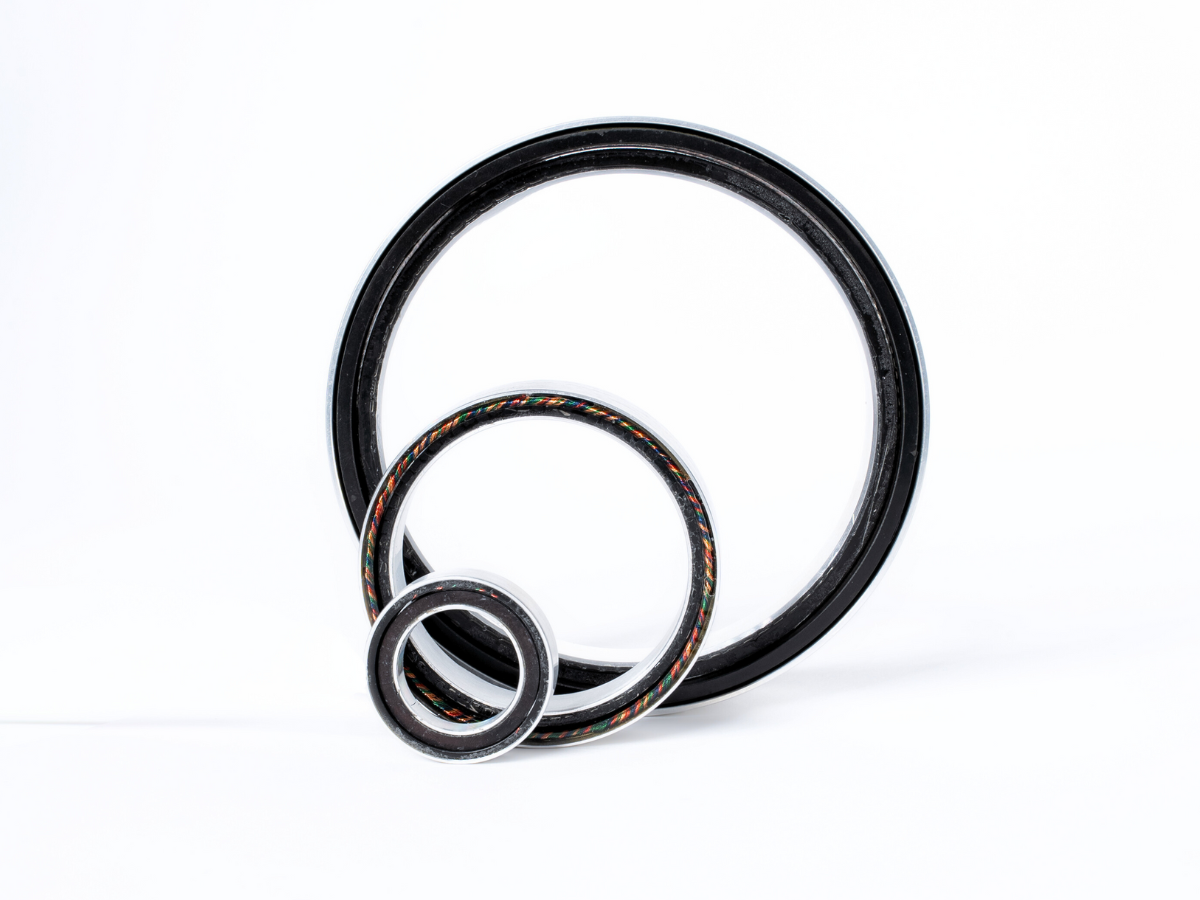
Slotless Motor
Slotless Motor
A slotless motor is a Brushless Direct Current (BLDC) motor that doesn’t have the typical slotted iron core stator. Instead, the copper windings are wound in a pattern and potted in for example epoxy, to hold the shape. This stator is then combined with a rotor and this creates a motor that is lighter, more compact and has specific properties compared to a slotted motor. For example, the slotless motors don't have the slotted iron core and therefore experiences less torque saturation, and virtually no cogging.
The Alva slotless motors take this even further by introducing the FiberPrinting™ technology that increases the copper fill factor and has non-skewed windings as stators. These two features, combined with the overall simplicity and compactness of the design, allows for very thin, lightweight and efficient stators.
These stators are then combined with Halbach array rotors, that maximise magnetic flux to increase the torque output. These technologies make slotless motors, not only much more powerful than regular slotless but also capable of rivaling slotted ones for the same volume, while being much lighter.

SlimTorq™
Slotless Motors
Alva’s standard SlimTorq™ product range includes several different sizes, from the smallest at 25 mm in diameter to the largest at 160 mm. Most sizes are available in two configurations: a lightweight version and a maximum torque version. Each motor can be produced with termination options in either a radial or axial direction.
Additional options include integrated temperature sensors or Hall effect sensors, as well as various stator winding configurations to optimize the motor for a specific torque or voltage constant. This flexibility allows the SlimTorq™ motors to be tailored to meet the precise requirements of virtually any application.
To learn more about the SlimTorq™ product range, please explore our product catalog and product selector.
Custom Slotless Motors
The FiberPrinting™ technology makes it possible to create custom slotless motors. Not only is it possible to create different diameters and lengths, it’s also possible to optimize for different attributes. In simple terms this is achieved by tweaking the design of the stator windings, and the size of the magnets. For example, the stator windings can be made longer, which creates a larger diameter, or wider, which creates a longer motor. Also, the winding configuration can be tweaked to create a different number of poles and a completely different torque constant. It all depends on the requirements and what is the main focus of the design.
In addition to the adaptable manufacturing technique, Alva has developed a design tool, called RDT (Rapid design tool) to iterate and create these motor designs quickly. In this tool it’s possible to optimize the motor for different specifications, for example low weight, high motor constant or something else. If you’ve ever looked for a motor you couldn’t find, let us know and we can possibly create it.
.png)
Slotless Motor Specifications
| Header | Header | Header | Header |
|---|---|---|---|
| Cell | Cell | Cell | Cell |
| Cell | Cell | Cell | Cell |
| Cell | Cell | Cell | Cell |
| Cell | Cell | Cell | Cell |
Alvas SlimTorq™ products cover a broad range of slotless motor specifications. In the product catalog, all the necessary data can be found, including technical drawings, electrical specifications and torque-speed curves. In case anything is missing or a specific case needs Alva’s attention, reach out to us to discuss with our experts.
Slotless Motor Applications
Slotless motors can be found in many applications. Wherever there is a need for a precise, compact, lightweight and efficient electric motor, a slotless motor is a good alternative. This could mean applications like:
- Precision Gimbals
- UAV payloads
- Exoskeletons
- Surgical robots
- Aerospace applications
- Rim thrusters
- UGVs
- Reaction Wheels
- Gyroscopes
.png)
Slotless Motor FAQs
Ask a question
Typically 6-8 weeks.
Typically 16-20 weeks from confirmed specifications to first prototype.
NTC Temperature sensor or Hall effect sensors.
-40 to 80 degrees celsius ambient temperature for standard motors. Extended temperature versions are possible as custom designs.
Yes, our motors are typically rated to 72v and we can derive the speed-torque curves for any specific voltage supply within that range.
Yes, we can help out with suggesting suitable motors to a set of application requirements. And if we can’t find a match, we can also offer to create a custom design to match the need.
Get in Touch
Talk to an engineer or request a quote today.
Our motors

All rights reserved ©2025